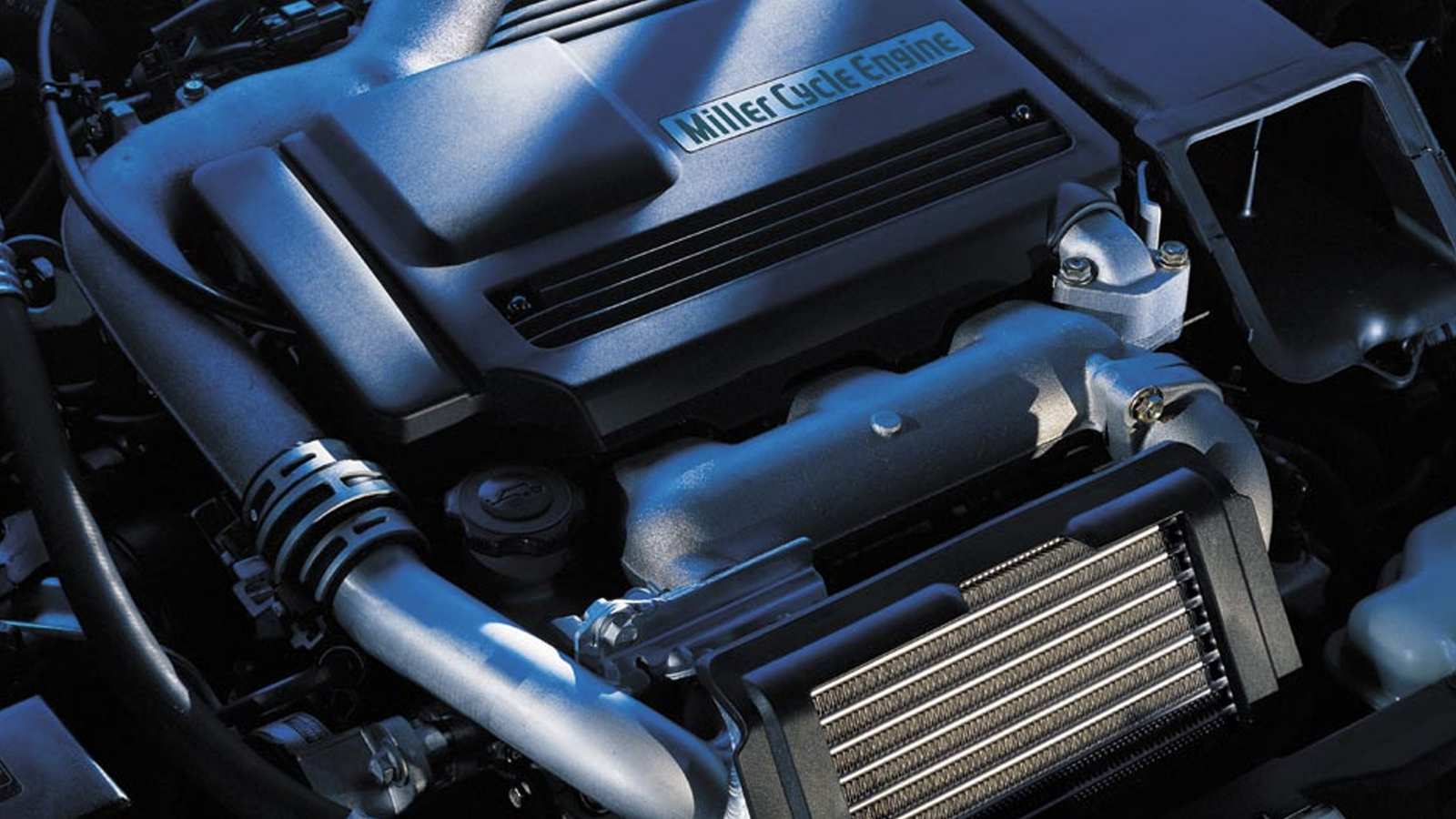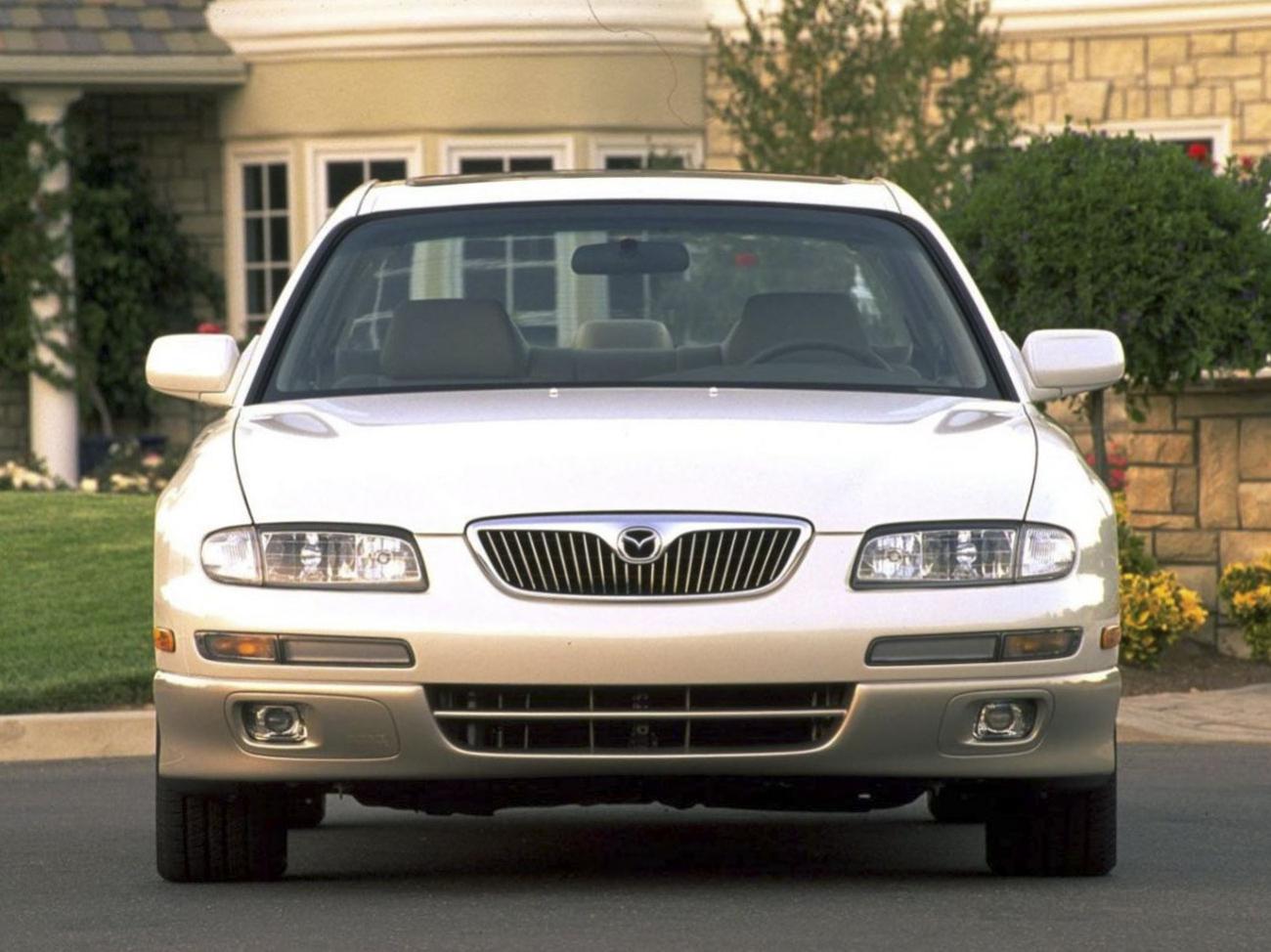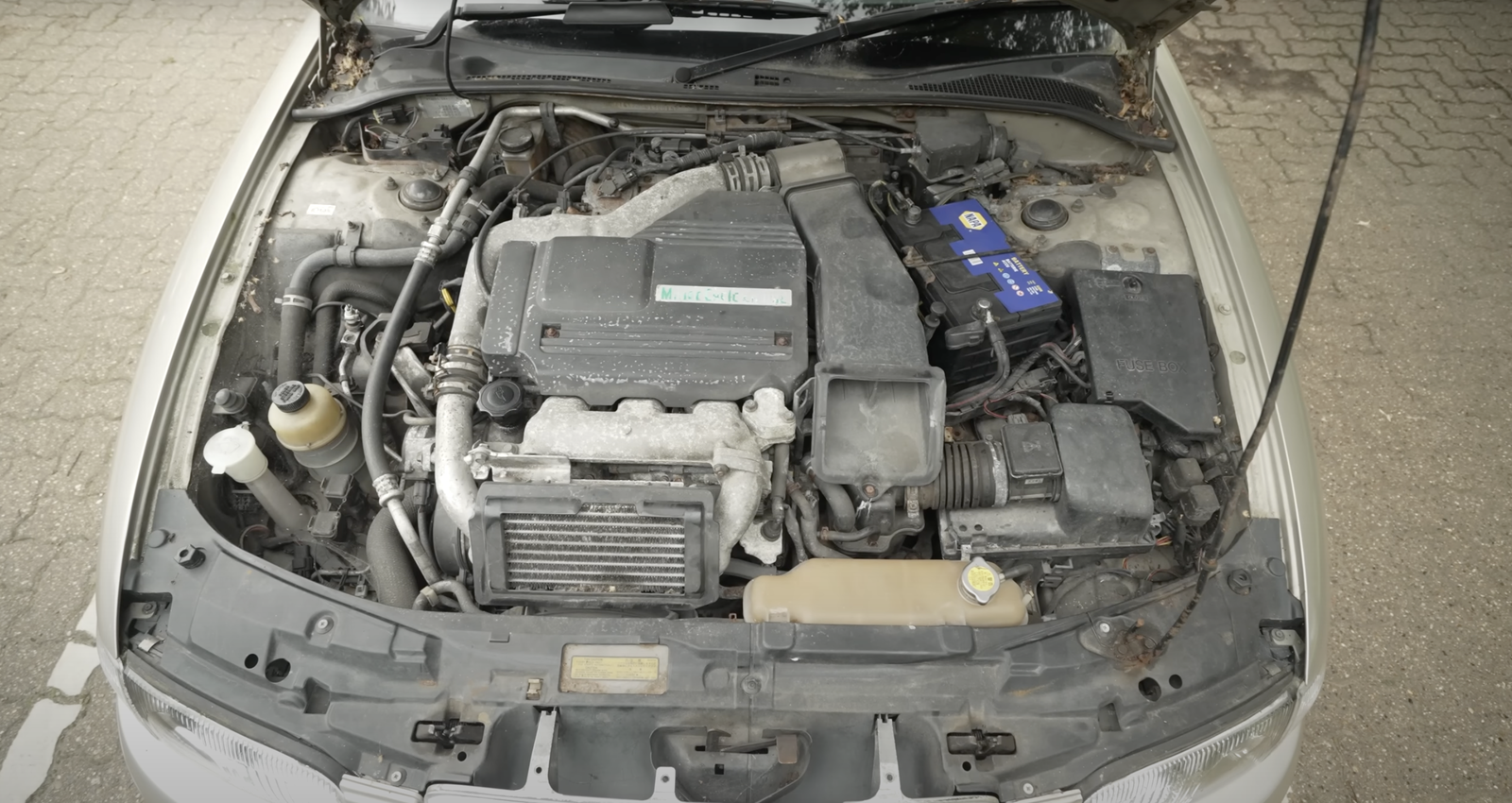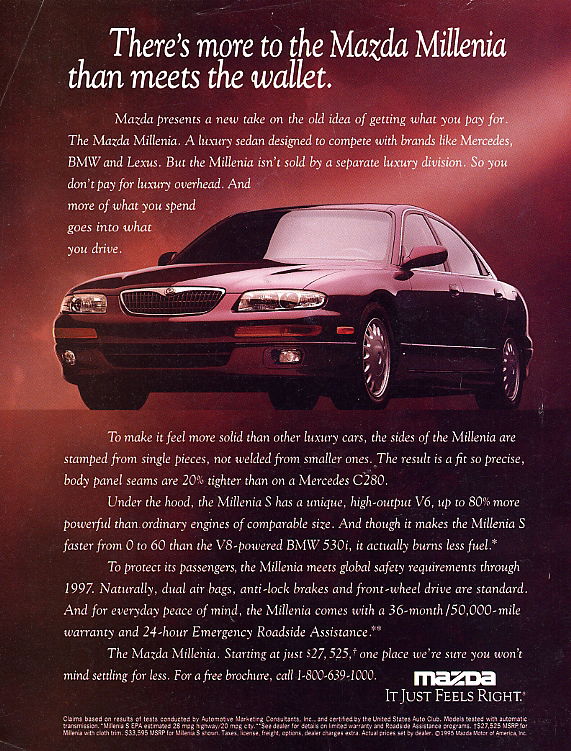Mazda Once Made a 2.25-litre V6 And It’s As Weird As You’d Imagine

Mazda has never been one for convention. After all, it’s the brand that made the Wankel rotary engine famous - known for its use in the RX-7 and RX-8, and recently revived as a range-extender for the MX-30.
Even more recently, it’s offered the Skyactiv-X engine, a high-compression petrol engine designed to give diesel-like torque and fuel economy. It continues to offer diesel six-cylinders in an ever-more electric world, too, and there are rumours a rear-driven inline-six Mazda 6 is on the horizon.

It won’t shock you to learn then, that Mazda once offered a very atypical engine - a supercharged 2.25-litre V6. It sounds like something the reserve of an experimental sports car, but no, instead found in the pretty sedate and obscure Millenia saloon (known as the Xedos 9 in Europe).
Codenamed KJ-ZEM, it’s not just the displacement that’s unusual - it was also the first mass-produced engine to use the Miller cycle. Why have we chosen to bring this up now? Without giving too much away, it’s worth checking out our latest £2,000 cheap car video…
What is the Miller cycle?
Most four-stroke petrol engines run on what’s known as the Otto cycle. The Miller cycle has the same four strokes (intake, compression, power, exhaust) but with a key difference.
During the compression stroke in an Otto cycle engine, the intake valve is closed as the piston compresses the fuel-air mixture against the cylinder wall. In a Miller cycle engine, the compression stroke occurs in two stages. During the first stage, the intake valve actually remains open, allowing for some of the fuel-air mixture to re-enter the intake manifold.
The second stage occurs when the piston reaches about 25 per cent of its stroke length. At this point, the intake valve closes, and the piston compresses the remaining fuel-air mixture until it is ignited by the spark plug.

This is quite similar to the Atkinson cycle engine, which is commonly used in hybrid-electric vehicles. Because the piston doesn’t have to compress as much fuel-air mixture, the engine’s overall efficiency is greater than the typical Otto cycle engine.
The main drawback to the Atkinson cycle engine is that the lower compression ratio makes it less powerful than an Otto cycle engine. The Miller cycle engine solves this problem by using forced induction (typically a Roots-style supercharger) to maintain compression while increasing the expansion ratio, or the rate at which the fuel-air mixture expands after ignition. The end result is an engine that is more powerful, refined and efficient than a conventional unit.

Mazda’s KJ-ZEM Miller cycle engine was years ahead of its time when it was equipped in the Millenia. It produced 210bhp and 210lb ft of torque and achieved a combined fuel consumption of 24mpg (US). Those figures may not sound all that impressive today, but the KJ-ZEM was one of the most efficient V6 engines of the mid-1990s - and not all that far down on power of some of the finest JDM sports cars of the time.
It also gave the Millenia some relatively decent performance for a front-driven luxury saloon, with a 0-60mph time of around 8.5 seconds and a top speed of 140mph.
However, the greatest part about the KJ-ZEM was the noise it made. Give it a listen.
Unfortunately, the Mazda Millenia wasn’t particularly popular and faded into obscurity after being discontinued in 2002. Mazda never used the KJ-ZEM in any of its other models, as it was relatively complex and expensive to produce. This makes it among the rarest of Mazda’s engines today.
Original article by Kyle Ashdown, updated in October 2023 by Ryan Hirons

Comments
I wanna put that in an MX5.
I remember doimg a school project on how i would release a limited edition MX5 RRS with the engine from thw millenia
I owned both a V6 Xedos 6, and a Xedos 9. They are amazing cars, but I liked the Xedos 6 better
I always find it amazing when manufacturers manage to squeeze that much power from a small engine. 210 horses from a 2.2L piston pumper’s pretty good, and 24mpg is something I long wish to have! (It’s better than 21, at least!)
We would have cars like this today if it weren’t for emissions. A supercharged V6 10 years ago was nothing special. Today it’s practically a sin in the eyes of the automotive world because it isn’t hybrid or electric or turbocharged. Unbelievable how far we’ve stooped down.
Nissan: Ok guys, thanks for showing up at work today, but there’s nothing to do. We couldn’t be bothered doing anything innovative, so you can just go home. Don’t worry, you’re still being paid so… just go play Fortnite or something.
Mazda: Ok guys, so everyone else is getting ahead of themselves and think EVs what we need, BUT THEY’RE WRONG. So go design an ICE that’s super efficient. Have fun! Oh, and the first one of you to come up with a working design gets a pay rise.
Pagination